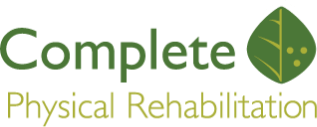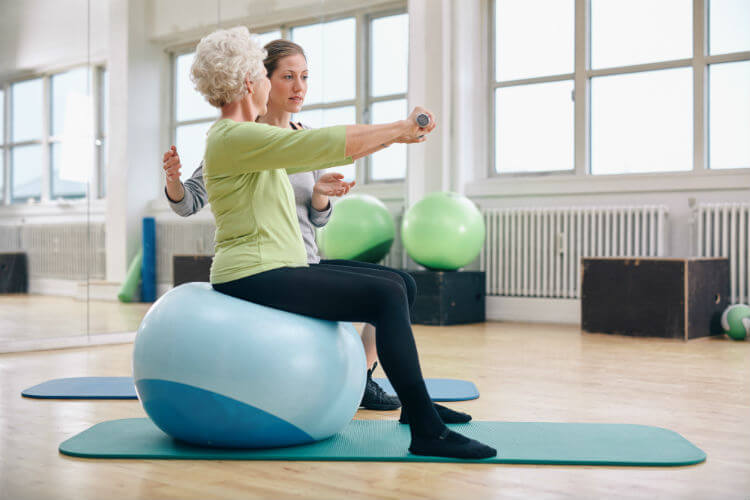How Physical Therapy Can Help
Did you know that strengthening your core muscles is linked to developing better balance? It’s true! When your core muscles are strong, they have a better chance of preventing you from experiencing chronic lower back pain and developing other injuries. They also prevent you from losing your balance or falling over. A strong core helps to keep you in an upright position, especially as you get older and develop more of a risk of falling and hurting yourself.
If you’re curious to learn more about creating a core routine to improve balance, contact Complete Physical Rehab today to set up an appointment with one of our certified physical therapists!
Balance and Core Strength Go Hand in Hand!
In total, your body has three systems that help regulate and sustain your balance. The first one is the vestibular system, which is responsible for giving your brain the necessary information it needs about how we move, our head position, motor functions, etc. The liquid in your inner ear functions as part of this system, sort of like a “carpenter’s balance” to keep you level. If you’ve ever found yourself feeling off-kilter or dizzy, it means that the liquid in the vestibular system is off a bit.
The second balancing system is your visual system. Your eyes send informational signals to your brain regarding your position in relevance to the world around you. The third balancing system is the proprioceptive system, which deals with your core and the muscles in that area.
Your proprioceptive nerves are sensory nerves located all over your body. They make you aware of your posture, as well as aware of where you are positioned compared to things surrounding you. In order to stay properly balanced, all three of these systems need to be in equilibrium. A weak core is one element that can not only throw off this internal equilibrium but can also make you feel off-balance to the point of falling over.
About Your Core: Muscles, Stability & Strength
Most people believe that when you work on your core, you’re just doing ab crunches, but your core muscles are more than just your abs! There are two classes of core muscles: your inner core and your outer core.
The inner core muscles are attached to your spine. These are the muscles that stabilize your core and keep it in the right position. The outer core muscles work together with the inner core muscles when you need to move your body and do most of your daily physical activities.
Core stability relates to your inner core muscles. These muscles stabilize your spine. Core strength relates to the outer core muscles and when it is properly developed, works to help you move around with ease. Having regular visits with a licensed physical therapist can help assist you with training both your inner and outer core muscles for better balance and movement!
How Physical Therapy Can Improve Core Strength & Stability
You don’t need a bunch of expensive gym equipment to start working on your core strength to improve balance. In fact, here’s a quick exercise that many physical therapists will recommend if you’re just starting out. It’s called the “drawing in maneuver,” or if you prefer the less fancy term, “sucking your gut in.”
Contrary to what many believe, it’s not necessary to go out and buy a ton of expensive gym equipment or memberships to work on your core strength to improve balance. According to the Mayo Clinic, any exercise that involves the use of your abdominal and back counts as a core exercise.
Here is a fast and easy exercise that many physical therapists recommend to patients who are just beginning to work on theirs. It’s referred to as the “drawing-in maneuver.” We all have probably done it before; ever heard of the phrase “suck your gut in?” This is pretty much the same thing!
The Drawing In Maneuver
To begin, stand up straight. Find the correct pelvic position by rotating your hips forward and backward until you’re comfortable. Then, take a deep breath and draw your belly button in toward your spine. Make sure you are not holding your breath though, as this isn’t a breathing exercise! You should be able to talk, breathe, and walk around your house with your belly button drawn in. It sounds pretty easy on paper, but if you’re older, recovering from an injury, or out of shape in general, this maneuver will prove to be a little hard at first.
The goal is to build up your core strength until you can hold your belly button in for 30 seconds. Then you can move on to more challenging core exercises. If you feel any pain at all from this maneuver, stop immediately, as this should not be painful!
As you build up your core, your physical therapist will suggest that you move on to more strenuous activities and exercises that are the best fit for your age and abilities. These will range from bridges and planks for the more athletic individuals, to more gentle routines (like yoga) for older individuals. Your therapist will also work with you on specific core exercises to help your balance.
Contact our office today for more information
If you have a weak core or you’re struggling to find ways to improve balance, physical therapy can help! Your physical therapist will do a thorough examination of your condition, assess your physical abilities, and create a customized treatment plan just for your needs. Contact Complete Physical Rehab and schedule an appointment to get started with a physical therapist today.

